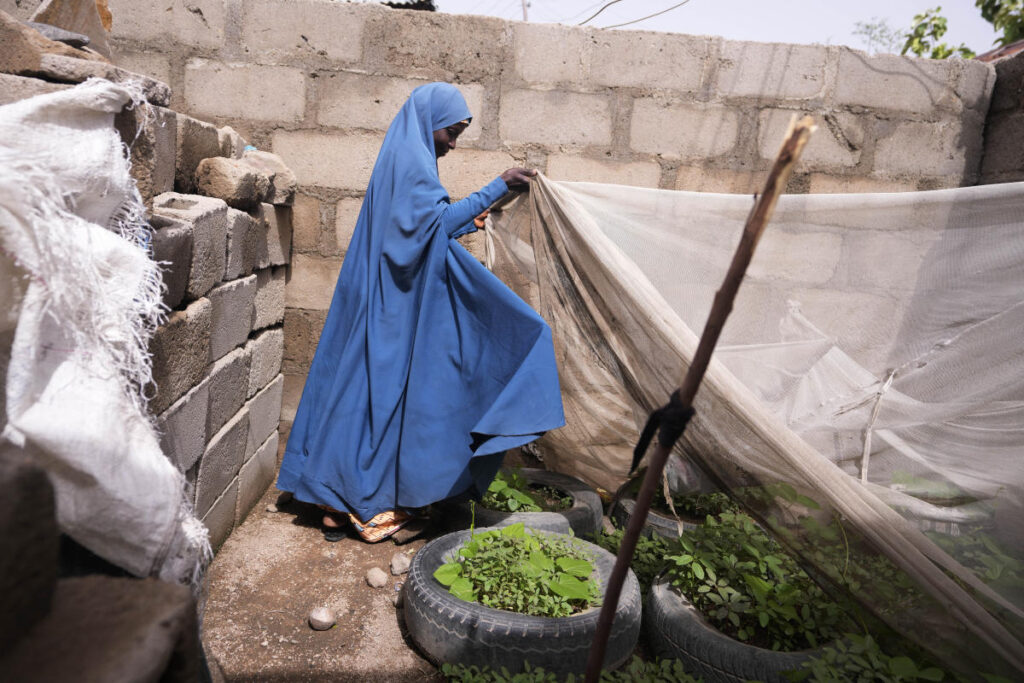KALTUNGO, Nigeria (AP) — 9-month-old twins cried nonstop and pulled on their mother, seeking attention but also food. They had received little in the past 24 hours and there were signs of deeper hunger in heads too big for their small bodies.
“There’s not much milk coming out,” said their 38-year-old mother, Dorcas Simon, who has difficulty breastfeeding and has three other children. She laughed, as if to hide the pain. “What shall I give them if I have no food of my own?”
Here in northern Nigeria, true conflict And climate change have long contributed to the problem, her twins are among the 181 million children under the age of five – or 27% of the world’s youngest children – living in severe food povertyThis is evident from a new report Thursday from the UN children’s agency.
The report, which focused on nearly a hundred low- and middle-income countries, defines severe food poverty as consuming nothing per day or, at best, two of the eight food groups the agency recognizes.
Africa’s population of over 1.3 billion people is one of the hardest hit, mainly as a result of conflict, climate crises And rising food prices. The continent is responsible for a third of the global burden and is responsible for 13 of the 20 most affected countries.
But some progress has also been made, the report said.
The proportion of children living in severe food poverty in West and Central Africa has fallen from 42% to 32% over the past decade, the report said, noting progress including diversified crops and performance-based incentives for health workers.
Lacking essential nutrients, children who eat an “extremely poor” diet are more likely to be wasted, a life-threatening form of malnutrition, the agency known as UNICEF said.
“When wasting becomes very severe, they are 12 times more likely to die,” Harriet Torlesse, one of the report’s authors, told The Associated Press.
In several Nigerian communities, such as Kaltungo in the northeast, where Simon lives, UNICEF is training thousands of women to boost their families’ nutritional intake with cassava, sweet potato, maize and millet grown in their home gardens.
More than a dozen women gathered in Poshereng village in Kaltungo this week to learn dozens of recipes they can prepare using food grown, in the absence of rain, in sand-filled bags that require little water.
Mothers in Nigeria also face those of the country worst cost of living crisis. Growing food at home saves money.
Aisha Aliyu, a 36-year-old mother of five, said her youngest child “used to be skinny but is getting fatter” because of what they now grow at home. Hauwa Bwami, a 50-year-old mother of five, almost lost her grandchild to kwashiorkor, a severe protein malnutrition disease, before UNICEF training began a year ago. Now she grows enough food that she sells to other women.
Kaltungo is located in a semi-arid agricultural area where climate change has caused little rainfall in recent years. Some children have died in the past from acute malnutrition because food is scarce, said Ladi Abdullahi, who trains the women.
The training “is like answered prayers for me,” Simon said during her first time with the group.
But it can be a painful lesson. Another intern, Florence Victor, 59, watched helplessly as her nine-month-old grandchild succumbed to malnutrition in 2022.
Malnutrition can also weaken the immune system over time, leaving children vulnerable to diseases that can be fatal.
In the Sahel, the semi-arid region south of the Sahara, which is a hotspot for violent extremismThere has been an increase in acute malnutrition – worse than severe food poverty – that has reached emergency levels, said Alfred Ejem, senior food security adviser at the aid group Mercy Corps in Africa.
Due to displacement and climate change, families have resorted to “poor coping mechanisms such as eating leaves and locusts just to survive,” Ejem said.
In conflict-affected Sudan children die of severe malnutrition in large numbers.
In Nigeria’s restive northwest, at least 850 children died within 24 to 48 hours of being admitted to health care facilities last year, according to the French medical organization Doctors Without Borders.
“We are treating patients on mattresses on the floor because our facilities are full,” Simba Tirima, MSF representative in Nigeria, said on Tuesday.
Many malnourished children in the region never reach a hospital because they live in remote areas or because their families cannot afford care.
Inequality also plays a role in severe food poverty among children in Africa, the new report says. In South Africa the most unequal country in the worldRoughly one in four children are affected by severe food poverty, even though this country is the most developed country on the continent.
Governments and partners must act urgently, said author Torlesse: “The work starts now.”
___
The Associated Press receives funding for global coverage of health care and development in Africa from the Bill & Melinda Gates Foundation Trust. The AP is solely responsible for all content. Find APs standards for working with philanthropies, a list of supporters and funded coverage areas AP.org.







